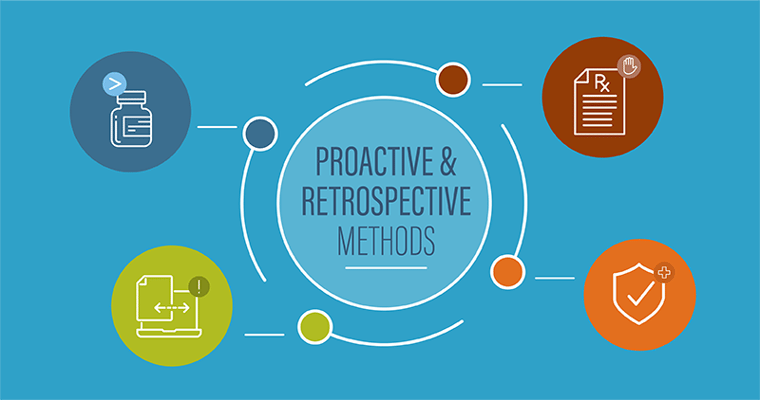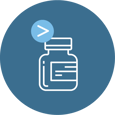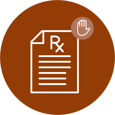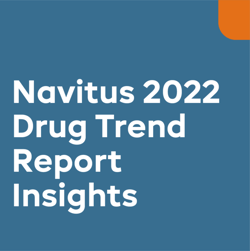In the second part of this two-part blog series, we’ll discuss a few tools that plan sponsors can use to effectively combat opioid abuse and misuse among their members. We’ll also share the results of a new type of opioid intervention program that has demonstrated success in reducing the number of opioid fills, quantity filled and days’ supply.

In patients who have not received previous opioid therapy, the risk of transitioning from short-term to long-term use begins to increase after the fifth day of exposure, especially in those receiving high doses or long-acting formulations.1 Yet, at their first primary care visit for pain, 46% of patients who were prescribed an opioid received enough for 7 days, and 10% received enough for 30 days.1 In addition, while opioids can be effective at managing postoperative pain, up to 71% of prescribed postoperative doses go unused.1 When opioids are prescribed in excess and go unused, it can contribute to and increase the risk of abuse and misuse in the home.
So, what can plan sponsors do to combat opioid abuse and misuse among their members?
Proactive Methods
Pharmacy benefit managers (PBMs) are well-positioned to address the opioid epidemic by analyzing pharmacy claims information, which is especially important if a member receives opioid prescriptions from multiple providers or uses multiple pharmacies to fill opioid prescriptions.

Concurrent Drug Utilization Review (CDUR)
CDUR programs offer many ways to alert pharmacies to potential opioid abuse at the point of service.
Navitus’ CDUR Program offers options such as a:
-
-
- High Cumulative Dose edit, which identifies members who have prescriptions for 90 mg morphine equivalent or greater, have used two or more pharmacies and two or more prescribers for active opioid claims.
- Concurrent Opioid Benzodiazepine edit, which identifies members concurrently filling benzodiazepines and opioids, and will reject if a member attempts to fill these medications concurrently.
-
 Formulary Management
Formulary Management
A consultative and collaborative approach to formulary development and management can serve as an essential tool for preventing opioid abuse. For example, preferring abuse-deterrent opioid products on the formulary or implementing utilization management strategies, such as prior authorization, step therapy, initial dispense limits and quantity limits help to ensure the appropriate use of prescribed opioids.
Retrospective Methods
 Retrospective Drug Utilization Review (RDUR)
Retrospective Drug Utilization Review (RDUR)
RDUR programs perform a retrospective claims review based on set criteria, seeking patterns of medication use that are potentially unsafe, inappropriate or ineffective.
A few programs in Navitus’ RDUR Safety-Focused program include:
-
-
- Controlled Substance Monitoring, which identifies members with potential overuse of controlled medications who visit an unusually high number of prescribers and pharmacies for controlled medications.
- Triple-Threat, which identifies members who have concurrent use of opioids, benzodiazepines/hypnotics and skeletal muscle relaxants.
- Controlled Substance Monitoring, which identifies members with potential overuse of controlled medications who visit an unusually high number of prescribers and pharmacies for controlled medications.
-
 RDUR Morphine Milligram Equivalent (MME)
RDUR Morphine Milligram Equivalent (MME)
The Centers for Disease Control and Prevention (CDC) released a guideline in 2016 to support evidence-based opioid prescribing for chronic pain.2 Because there is a direct association between an increased daily dose of morphine milligram equivalent (MME) and an increased risk for overdose, the guideline recommends avoiding increasing dosages to 90 MME or greater per day without proper justification. Despite the guideline, drug overdoses continue to rise in the United States with six times as many opioid overdose deaths in 2017 compared to 1999.3 In 2017, there was an average of 130 opioid overdose deaths per day with over 47,000 opioid overdose deaths total.3
To address this issue, Navitus recently launched a new type of opioid intervention – the RDUR MME program. The goal of this program is to promote safe, effective and appropriate opioid use for members by supporting prescribers in making evidence-based decisions. The program retrospectively identifies members prescribed an average of 90 MME or greater per day, excluding members with cancer or those in hospice or long-term care.
If the program identifies a member, the prescriber is made aware of the member’s average total daily MME dose and any concurrent non-opioid medications that could increase the member’s overdose risk. Prescribers can then determine what action to take, such as tapering pain regimens, prescribing naloxone and/or coordinating care with other prescribers.
The RDUR MME program supports plan sponsors in improving member health by increasing prescriber awareness of overutilization, optimizing safe medication use and supports care coordination between the PBM, prescriber(s) and member.
Interested in exploring how these tools could help you and your members prevent opioid abuse and misuse? Email us at sales@navitus.com or contact your account team today for more information.
- Babu K, Brent J, Juurlink D. Prevention of opioid overdose. The New England Journal of Medicine. https://www.nejm.org/doi/full/10.1056/NEJMra1807054?query=featured_paincmecollection. Published June 6, 2019. Accessed July 20, 2020.
- Dowell D, Haegerich TM, Chou R. CDC guideline for prescribing opioids for chronic pain—United States, 2016. 2016;65(1):1-49. DOI: http://dx.doi.org/10.15585/mmwr.rr6501e1. Published March 18, 2016. Accessed October 14, 2020.
- Opioid overdose: Understanding the epidemic. Centers for Disease Control and Prevention. https://www.cdc.gov/drugoverdose/epidemic/index.html. Accessed January 15, 2020.




